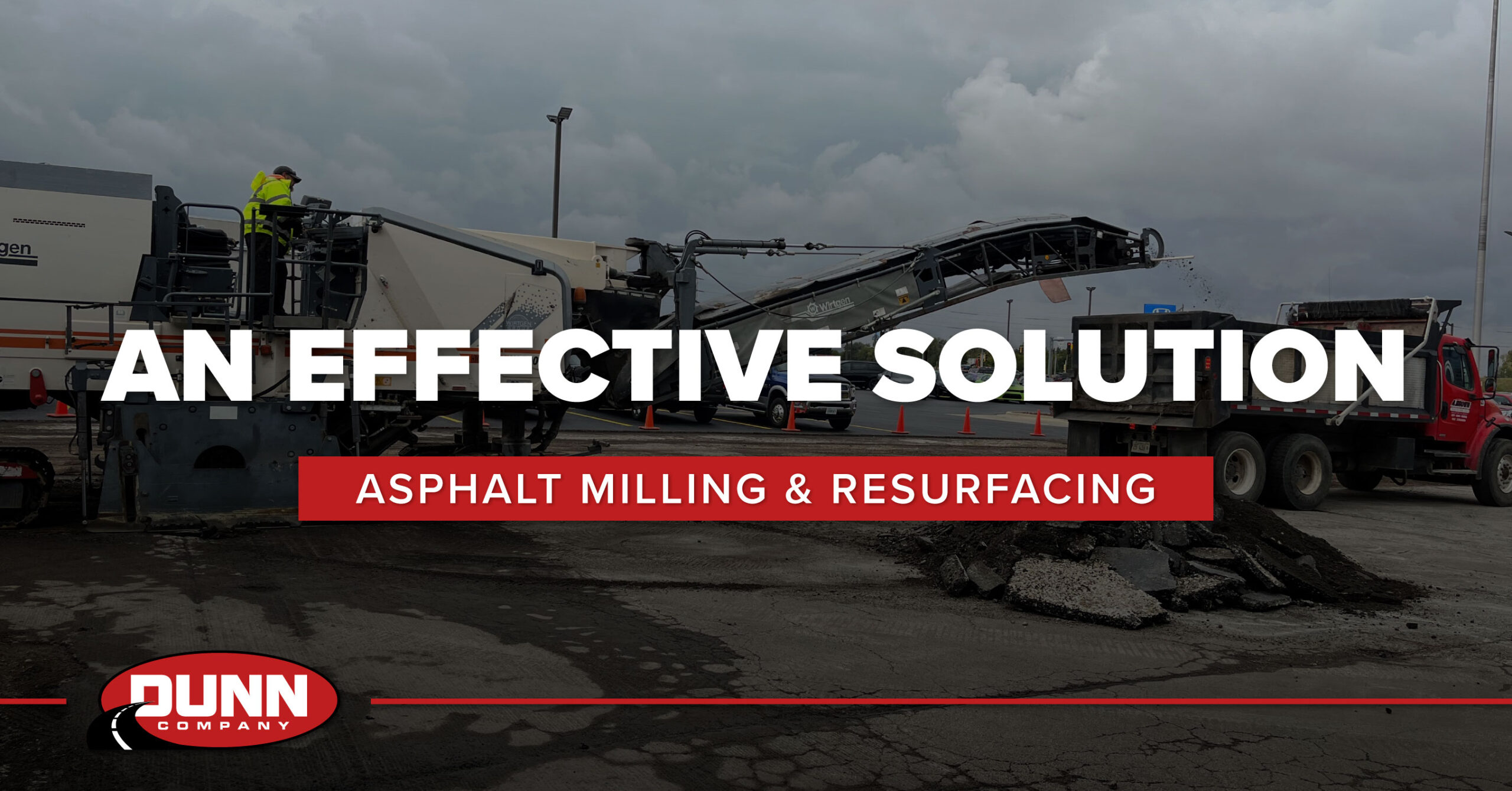Month: May 2025

Asphalt Milling and Resurfacing, An Efficient Solution
Asphalt milling and resurfacing are two of the most efficient and cost-effective solutions for maintaining and restoring aging or damaged roadways. These methods provide municipalities, contractors, and counties with the means to extend the life of roads, improve ride quality, and reduce long-term maintenance costs. We will cover the basics of asphalt milling, resurfacing, and the role they play in the rehabilitation of roadways.
What is Asphalt Milling?
Asphalt milling is a process used to remove a layer of deteriorating asphalt from the surface of a road. This technique involves using a milling machine to grind the asphalt surface into small particles, which are then collected and recycled. Asphalt milling is often used to address surface-level issues such as cracks, potholes, and ruts, allowing for a more efficient and cost-effective repair than full removal and replacement.

The primary benefits of asphalt milling include:
- Sustainability: Since the milled asphalt can be recycled and reused, the process minimizes waste and reduces the need for new materials.
- Cost-Effective: Milling is less expensive than complete pavement replacement and can be completed in less time.
- Reduced Traffic Disruption: Asphalt milling allows for localized repairs, meaning less disruption to traffic flow and fewer road closures.
How Does Resurfacing Follow Milling?
Once the asphalt has been milled, resurfacing is often the next step in the road rehabilitation process. Resurfacing involves applying a new layer of fresh asphalt over the milled surface, restoring the smoothness and integrity of the road. This process addresses issues such as cracks, ruts, and surface imperfections, improving both the ride quality and the safety of the road.
The benefits of resurfacing include:
- Enhanced Durability: The new layer of asphalt adds strength and longevity to the pavement, extending the life of the road.
- Improved Ride Quality: Resurfacing smooths out the surface, providing a more comfortable and safer driving experience.
- Cost Savings: Rather than tearing up the entire pavement, resurfacing offers a more affordable way to restore roads that are still structurally sound.
When to Use Asphalt Milling and Resurfacing
The decision to use milling and resurfacing depends on the condition of the existing pavement. Milling is typically used for roads with surface-level damage, while resurfacing is an effective solution for roads with worn or cracked surfaces but still in good structural condition. Here are some factors to consider when deciding whether to use milling and resurfacing:
- Surface Damage: Milling is ideal for addressing cracks, potholes, and other surface-level issues.
- Structural Integrity: If the base of the road is still strong, resurfacing can restore the road without needing full reconstruction.
- Cost-Effectiveness: Milling and resurfacing are more affordable than complete road replacement, making them a great option for extending the life of existing infrastructure.
Cold In-Place Recycling (CIR) – A Complementary Solution
While asphalt milling and resurfacing are effective methods for maintaining roads, there are times when a more comprehensive solution is needed. Cold In-Place Recycling (CIR) is one such solution. CIR is a process in which the existing asphalt surface is milled, mixed with a stabilizing agent, and re-compacted to create a new, durable road base.
The benefits of CIR include:
- Stronger Road Base: CIR strengthens the road’s foundation, providing greater durability and load-bearing capacity.
- Sustainability: Like milling, CIR recycles existing materials, reducing the need for new asphalt and aggregates.
- Cost Savings: CIR is often more affordable than full road reconstruction, offering a more economical option for rehabilitating severely damaged roads.
While CIR is not always applicable for every project, it can be a great option when a project qualifies for it.
Asphalt Milling and Resurfacing for Efficient Road Repairs
Asphalt milling and resurfacing offer municipalities, engineers, and contractors an efficient, cost-effective way to repair and restore roadways. These methods provide a sustainable solution that minimizes waste, reduces costs, and extends the lifespan of roads. Whether you are addressing minor surface damage or need to restore an aging road, milling and resurfacing are reliable options for maintaining infrastructure.
At Dunn Company, we specialize in asphalt milling, resurfacing, and CIR. Our team has the experience, equipment, and expertise to handle any project, large or small. Whether you’re looking to address surface-level damage or need a more comprehensive solution, Dunn Company has the tools to help keep your roads in top condition.
Contact us today to learn more about how we can help with your road rehabilitation needs.

